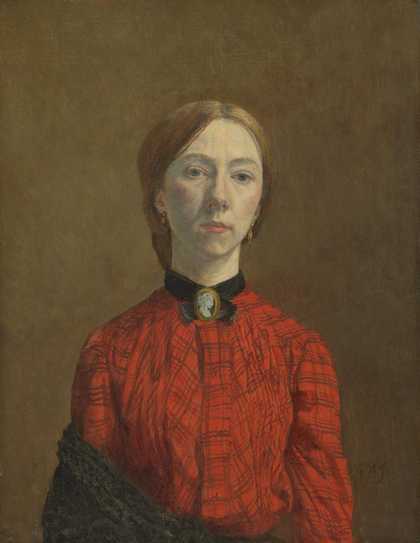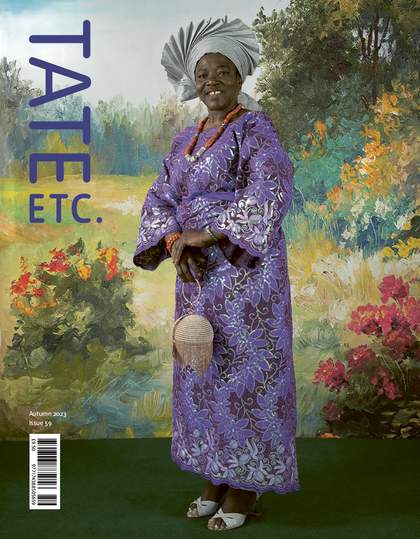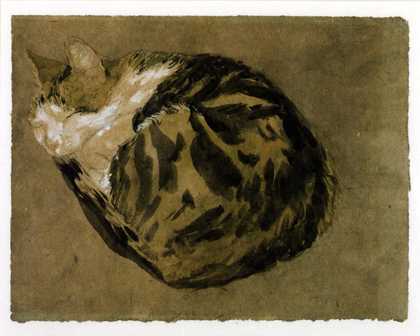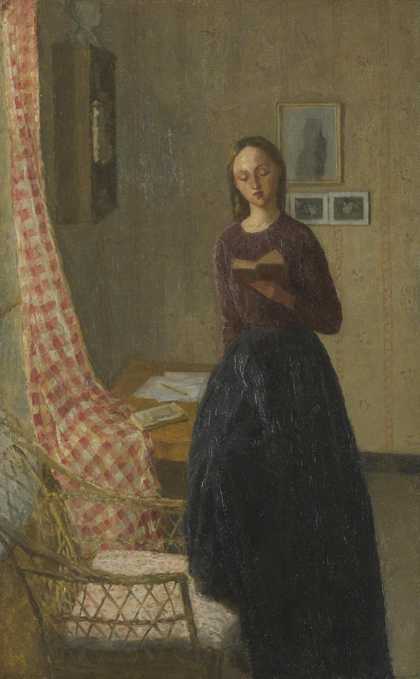
Gwen John
Self-Portrait (1902)
Tate
This is probably not Gwen John's best-known self-portrait. I bet that’s the 1907 one in which she’s holding up a letter, supposedly addressed to her lover Auguste Rodin. Her lips are slightly parted: what did she say to him, and what would she say to the viewer listening in now, across the century that separates us?
The 1907 self-portrait is more poetic, more typical of her Parisian palette, with its slate blues and greys, its hazy pinkish background, its outlines wavy and apparent beneath the gouache, as if its subject were trembling with whatever it is she has to convey.
The 1902 one she made in London, while she was still at art school, where it was, according to her biographer Alicia Foster, ‘an immediate success’. Her colours here are very different: darker, more saturated. The red of her tartan blouse, with its complex pleats and folds, is a colour she would hardly ever use again, except in very sparing doses. It blazes against the muddy background; this is from her ‘subterranean period’, when she lived in what her brother Augustus John called a ‘dungeon’ off Fitzroy Street. She looks so modest, but the red of her tartan burns in her cheeks.
The painting is a subtle demonstration of all she had learned about organising a visual field. In the exact centre of the painting, there is the cameo at her throat – a reference, surely, to classical aesthetics; the velvet choker forms an ‘X’, which sets in conflict the diagonal lines undergirding the painting, echoed by the slope of the shoulders just above. Then there is the slight tilt of the head – inquiring, regarding – disrupting the otherwise geometric organisation of the tension-establishing diagonals, which shoot right out beyond the frame – like lines of flight.
‘Self-portraits’, writes Frances Borzello, ‘are not innocent reflections of what artists see when they look in the mirror’, but rather‘ part of the language painters use to make a point’. The point John is making doesn’t require that she hold a brush in front of an easel to suggest that she is a serious artist; even if we didn’t know this was a self-portrait, surely something about the look in her eye, both challenging and secure, would tip us off that this is no ordinary portrayal of a young woman.
It steadies my nerve to meet her gaze. If this portrait could whisper, it would say: burn.
Self-Portrait was purchased in 1942 and is on display at Tate Britain.
Lauren Elkin is an artist and translator who lives in Paris. Her latest book, Art Monsters: Unruly Bodies in Feminist Art, is published by Chatto & Windus



